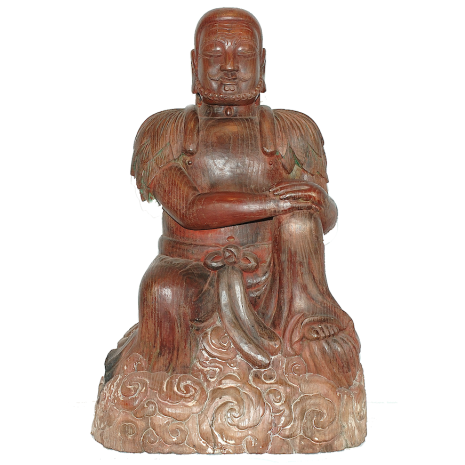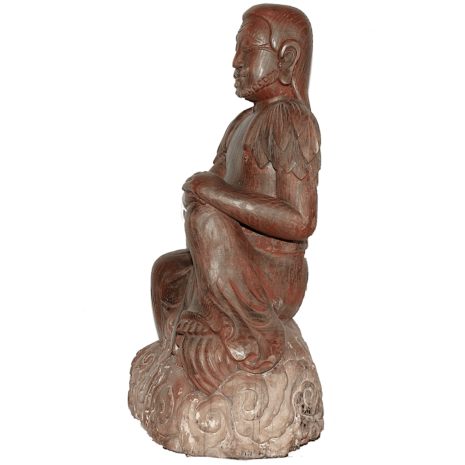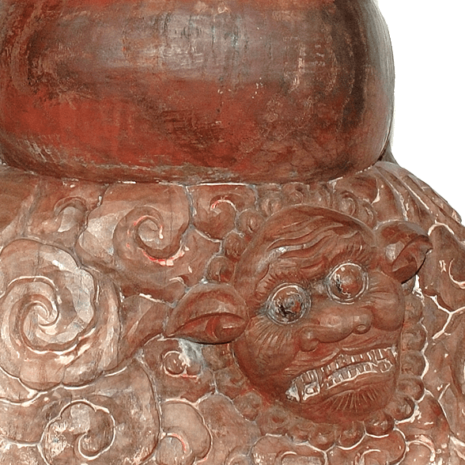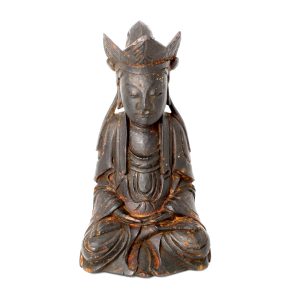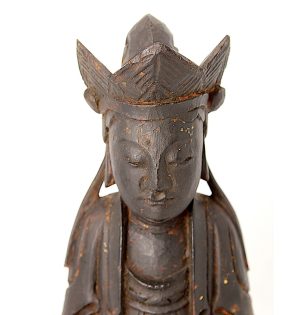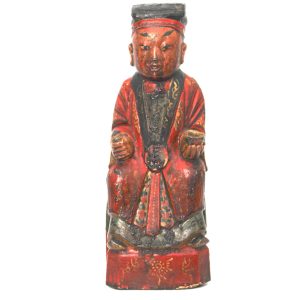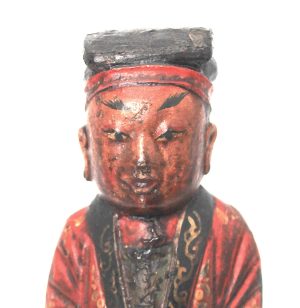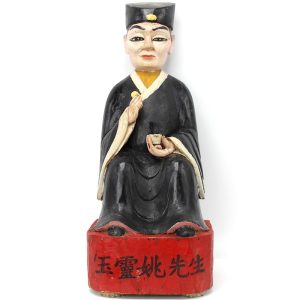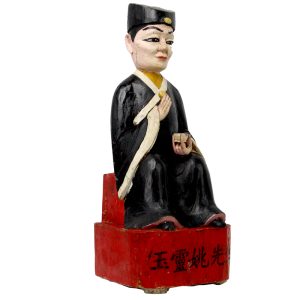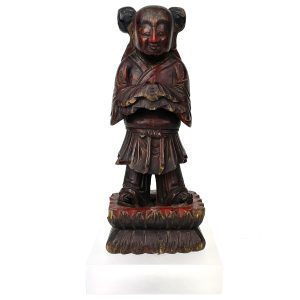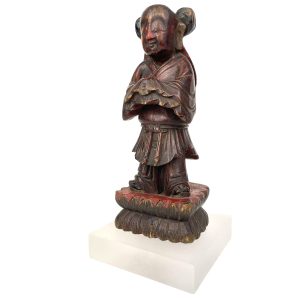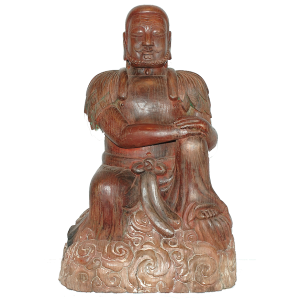Antique Shen Nong, Founder of Natural Medicine, China (16530BCEM) $4600
$4,600.00
H: 30.5″ W: 19.5″ D: 11.75″ | call US AT 213-568-3030 FoR SHIPPING AND PRICE INFORMATION
Thislarge image Shen Nong is carved in the round. He sits on clouds with a knee up, shoulders covered with leaves also draped down his back. A ribbon covers his genitals underneath his bared navel. His face is set in a benevolent smile, and his beard and eyebrows consist of finely styled curls. Exquisitely carved and extremely rare, this statue would be a prized image for anyone in the medical or pharmaceutical field.
Description
This fine and rare kneeling image is Shen Nong (Shennong (神農), “Divine Farmer” or “Divine Husbandman”), one of most revered cultural heroes in Chinese mythology. Born in the 28th century BCE, he is the Founder of Natural Medicine and the Father of Agriculture, the 2nd of the Three Emperors of the Celestial Ministry of Health, and a syncretic deity in both Taoism and Poplar Folk Religion. Deified by the the Han Dynasty as the Father of Agriculture and an Earth God, he is said to have invented farming implements such as the plow and the axe and introduced planting, cultivation, crop rotation and methods of raising domestic animals. Credited as the author of the earliest known Chinese medical classic, a compilation of medical physiology, anatomy and acupuncture called the Canon of Internal Medicine, the bible of traditional Chinese medicine, as well as the Divine Husbandman’s Materia Medica, the earliest Chinese pharmacopoeia of 365 medicines derived from minerals, plants and animals. He is believed to have discovered tea almost 5000 years ago: while sitting under a tree while his servant boiled drinking water, tea leaves from the tree blew into the water and it became the 1st cup of tea! He was the first to analyze beneficial and harmful properties of herbs and determined their efficacy by testing them on himself. Believed to be an immortal who assumed human form, he came to Earth to benefit the plight of humanity. When rarely portrayed as in this antique Chinese wood carving, he sits on a rock or a seat of clouds. Here, the face of a mythical animal covered by clouds is on the rear of the image. He is usually dressed in leaves and grass around his neck, waist and calves or wears a skirt of leaves (Stevens, p.37) as he was viewed as a primitive God who lived on earth before clothes were invented. The closed bung on the rear indicates this carving was consecrated and it is a perfect piece for a health care professional.
Sources:
Stevens, Keith: Chinese Gods, The Unseen World of Spirits and Demons, Collins and Brown Limited, London, 1997
National Institutes of Health, National Library of Medicine, History of Medicine Division online Exhibit of the Classics of Traditional Chinese Medicine, Bethesda, MD, Oct 1999-May 2000.
Additional information
| Place of Origin | China |
|---|---|
| Period | Antique, Qing Dynasty |
| Date | 19th Century |
| Materials and Technique | Wood |
| Dimensions (inches) | Ht: 30.5" W: 19.25" D: 11.75" |
| Dimensions (metric) | Ht: 77.47cm W: 48.89cm D: 29.84cm |
| Condition | Excellent, fine patina demonstrating age and use |
| Shipping Box Size | This item is oversized. Call 213-568-3030 for shipping cost. |
| Item Number | 16530 BCEM |
